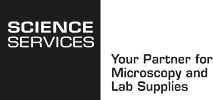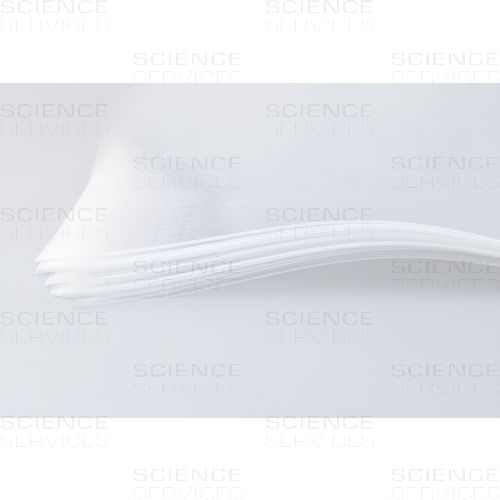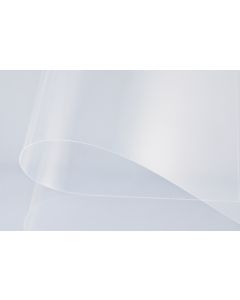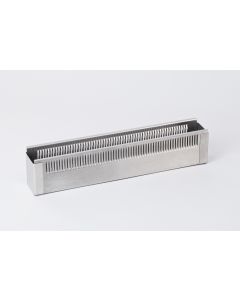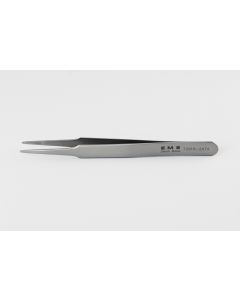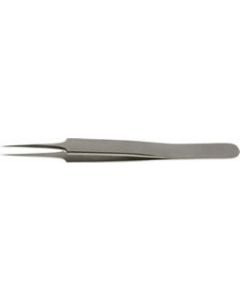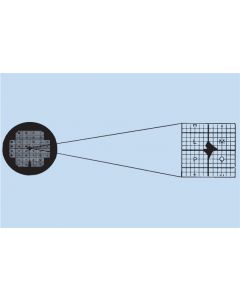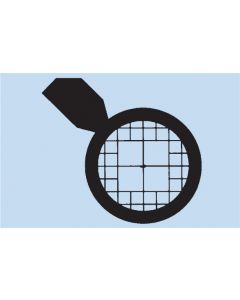ACLAR® Fluoropolymer-Film, 210x297mm (DIN A4), 51µm thick (2mil)
ACLAR® UltRx is a PCTFE homopolymer film. It is successfully used to grow cells, perform high-pressure-freezing (HPF) and as barrier film for embedding. It is sterilizable by heat or radiation.
ACLAR® offers an outstanding moisture barrier, excellent chemical resistance, thermal stability and low dimensional change (<6%). It is crystal clear, biochemically inert, plasticizer and stabilizer free.
Product Details
Description
ACLAR® is made from fluorinated-chlorinated resins. There are four basic film types–the homopolymer ACLAR® Rx Series, the new ACLAR® UltRx and the discontinued copolymers ACLAR® 22A and 33C (Honeywell). The chemical make-up of all ACLAR® products provide an exceptional moisture barrier. ACLAR® is crystal clear, biochemically inert, highly resistant to most chemicals and sterilizable by heat or radiation. ACLAR® is used widely in pharmaceutical, medical, sensitive electronics and military packaging.
ACLAR® UltRx is a PCTFE homopolymer film. It offers an outstanding moisture barrier, excellent chemical resistance and small dimensional change (<6%). It is crystal clear, biochemically inert, plasticizer and stabilizer free. It is successfully used to grow cells, perform high-pressure-freezing (HPF) and for embedding.
Features
- Crystal clear, high UV transparency– ideal for use in UV curing of embedding resin in microscopy.
- Chemically stable and biochemical\y inert– the product of choice for growing cell cultures.
- Low dielectric constant, high electric strength and dissipation factor– offers excellent cell attachment even through lengthy processing procedures.
- Low surface energy–and separates easily from epoxy.
- Exhibits no detectable autofluorescence– ideal for fluorescent microscopy.
- A non-flammable, non-aging co-polymer–
which is suited for sterilization by heat or UV. - Crystalline melting point is 211°C (403°F)– stable in the SEM.
- Flexible and soft– can be sectioned without damage to the ultramicrotome knives.
- Stable for use with High Pressure Freezing.
ACLAR® film is available in 2 mil (51µm) thickness and it is offered in DIN A4 (210x297mm) sheet form with package quantities of 10 or 25.
ACLAR® Physical Data Sheet
(These are typical values for 2.00mil PCTFE homopolymer and are not to be interpreted as product specifications):
| Properties@ 73°F ~50% RH | English | Metric | Test Method |
| Gravity Specific | 2.11 | ASTM D1505 | |
| Yield |
6,567 in2/lb. | 9.34m2/kg | |
| Haze | <1% | ASTM D1003 | |
| Crystalline Melting Point | 412°F | 211°C | ASTM D4591 |
| Dimensional Stability, 10 min @ 300°F -MD -TD |
<+6% <6% |
ASTM D1204 | |
| Water Vapor Transmission Rate @ 100°F (37.8°C)/ 100% RH |
0.0077 gm/100 in2/day | 0.119 g/m2/day | ASTM F1249 |
| Flammability | Nonflammable | ||
| Surface Tension | >42 dynes/cm | ASTD D2683 | |
ACLAR® Chemical Resistance (typical)
| Chemicals | Average Weight Increase | Visible Effect on Sample |
| Acetone | 0.5% | None |
| Butyl Alcohol | - | None |
| Carbon Tetrachloride | 1.6% | Slightly flexible |
| 1,2-Dichloroethane | 0.03% | None |
| Ethyl Acetate | 6.0% | Very flexible |
| Ethyl Alcohol | None | None |
| Ethyl Ether | 5.2% | Very flexible |
| Ethylene Oxide | 4.0% | Very flexible |
| Formic Acid | None | None |
| Gasoline | None | None |
| All Acids (HCl, H2SO4..) | None | None |
| Methanol | None | None |
| Propylene Oxide | - | None |
| Toluene | 1.1% | Slightly flexible |
| Osmium Tetroxide | None | None |
| Plastisolve | - | None |
References
Jiménez N et al, Gridded Aclar: Preparation methods and use for correlative light and electron microscopy of cell monolayers, by TEM and FIB-SEM.
J Microsc. 2010 Feb;237(2):208-20.
Kingsley RE et al., Preparation of cultured mammalian cells for transmission and scanning electron microscopy using Aclar film.
J Electron Microsc Tech., 10, 77-85 (1988).
Mawe GM et al, Ultrastructure of HRP-labeled neurons: a comparison of two sensitive techniques.
Brain Res Bull. 1983 Apr;10(4):551-8.
Masurovsky EB & Bunge RP, Aclar Film in Biological Electron Microscopy.
J Electron Microsc Tech. 1989 Jun;12(2):172-3.
Stain Technol. 1968 May;43(3):161-5.
More Information
| Dimensions | 210x297mm (DIN A4) |
|---|---|
| Manufacturer |
ACLAR
|
